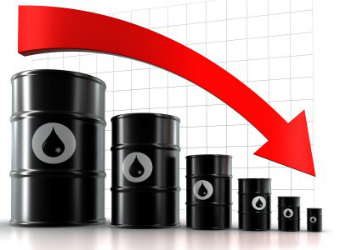Oil prices fell on Friday after U.S. President Donald Trump’s threat of new tariffs on China reignited fears of a trade war between the world’s two biggest economies.
Trump said on Thursday he had ordered U.S. trade officials to consider tariffs on an extra $100 billion of imports from China, escalating tensions with Beijing.
“There is a risk for oil prices that China uses the bazooka option it has on U.S. crude oil exports. China is the main importer (after Canada) of U.S. crude oil, to the tune of about 400,000 barrels per day,” Petromatrix said.
“If China was to impose counter tariffs on U.S. crude, it would become quickly very heavy for the U.S. supply and demand picture, resulting in U.S. crude oil price pressure that would have a negative impact on global oil prices.”
Brent crude for June delivery traded 1.8 percent lower at $67.07 a barrel. U.S. West Texas Intermediate crude for May delivery fell 2.3 percent to $62.06. Both are headed for their biggest weekly fall since early March.
“Oil’s taking the latest trade war stuff pretty hard. It sold off immediately last night when Trump announced the tariffs,” said John Kilduff, founding partner at Again Capital. “We’re taking a hit with the rest of the market.”
Meanwhile, Asian oil traders were struggling to understand how Saudi Arabia derived its official selling prices for May after it unexpectedly raised the price for its flagship Arab Light crude sold to Asian refiners.
The Organization of the Petroleum Exporting Countries and some non-OPEC producers including Russia are committed to cutting output by around 1.8 million barrels per day through the end of 2018 in a bid to clear a global overhang and support prices.
Russia said its cooperation with OPEC might become an indefinite arrangement.
OPEC and its allies should keep the cuts to ensure healthy price levels as a way to boost investment in the industry and avoid a supply and price shock in the long run, Qatar’s energy minister said.
Shanghai crude futures trading will resume on Monday after public holidays in China.
Source: Reuters



